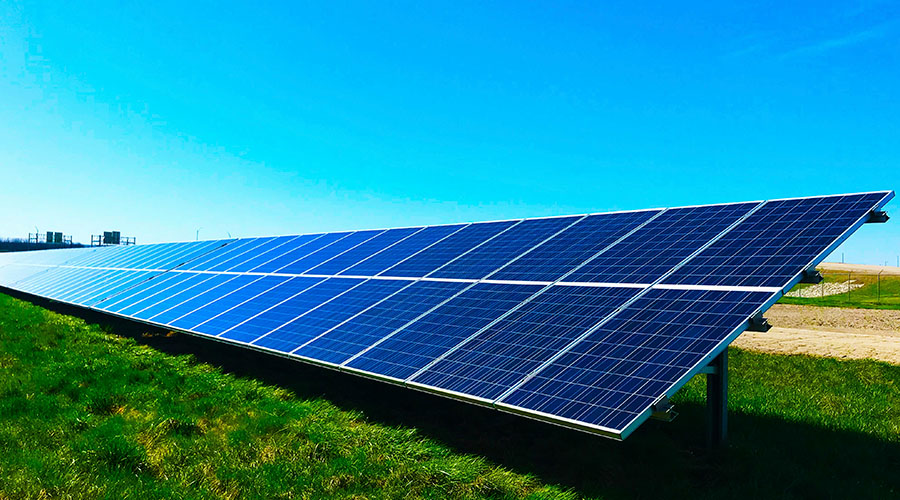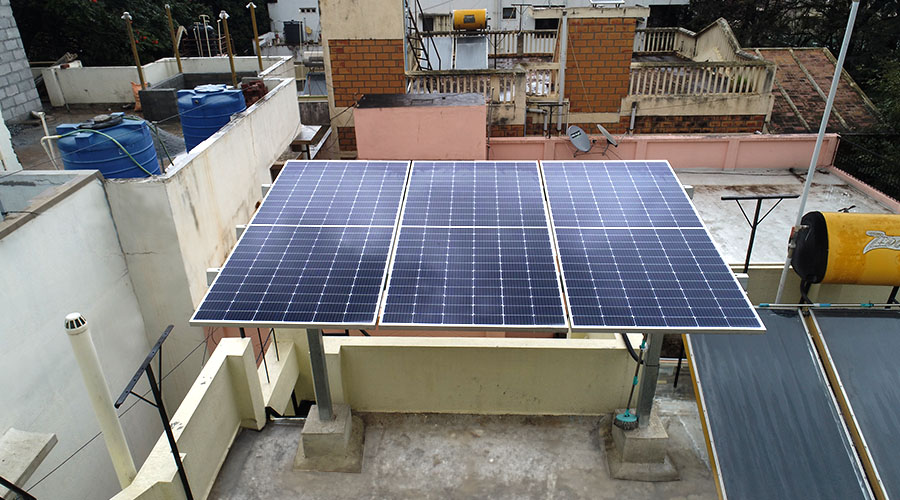What Should Be The Best Angle For A Solar Panel? Does Direction Matter?
This blog will reveal the ideal tilt angle of solar panels, explain its effects, discuss why solar panel direction and angle matter in India. The post What Should Be The Best Angle For A Solar Panel? Does Direction Matter? appeared first on Rooftop Solar for your home and more - Blog | SolarSquare.

A rooftop solar system is a crucial investment—powering your home for decades. Many believe purchasing solar panels and mounting them on aluminium or steel rods is enough to ensure your house is powered for years. However, the reality is that each rooftop solar system is a product of precise engineering. Everything from the mounting structure to the inverter, connecting wires, panel brand, and the solar panel’s direction and angle are crucial in optimising electricity generation output.
To generate maximum electricity and save more money, it’s essential to ensure your solar panels are perpendicular to the sun during peak hours. In countries like the USA, the solar panel direction and angle are determined by the house’s latitude from north to south, often tilted at a 30-45-degree angle. However, in India, the ideal solar panel direction is true south, while the optimal tilt angle of the solar panel depends on your location and project.
Additionally, it’s important to identify any areas that fall under shadow-covered zones.
This blog will reveal the ideal tilt angle of solar panels, explain its effects, discuss why solar panel direction and angle matter in India, address shadow issues on rooftops and explore the factors that affect panel angle.
What is the Ideal Solar Panel Direction and Angle in India?
Since India is located in the northern hemisphere, south-facing walls, doors, and windows receive the maximum sunlight exposure. Therefore, solar panels should face south to ensure maximum efficiency.
However, sunlight exposure is non-uniform throughout the country. While the general rule is that solar panels should face south, solar panel angle by location varies.
For example, the optimal solar panel inclination angle for southern states is around 10 degrees, whereas 20 degrees is more suitable in northern states. However, the optimal tilt angle will depend on the site’s latitude and longitudinal location.
Factors That Affect Solar Panel Angle
The angle of your solar panels influences how much sunlight they can capture, directly affecting the energy amount they produce. Here are the key factors that impact solar panel angle:
1. Geographical Location
Since northern states in India are at a higher latitude, solar panels are best tilted at a steeper angle to capture maximum sunlight, especially during winter months. In contrast, southern India, with its lower latitude, requires a flatter tilt to optimise solar gain year-round.
2. Wind Load
In areas prone to high winds, installing panels at a higher angle can increase the risk of damage due to wind load. This risk necessitates careful consideration of local weather patterns and will require a strong mounting structure to ensure stability and longevity.
3. Seasonal Variations
To achieve maximum efficiency year-round, align your tilt angle with the sun’s equatorial position. Any change in orientation can result in an imbalanced output.
4. Shading Issues
Nearby objects like trees, buildings, or other structures can cast shadows on your solar panels, reducing their efficiency. The solar panel angle and direction should be carefully designed to minimise shading issues.
The Effect of Tilt Angle on Solar Panel Efficiency
An increased solar panel tilt angle in northern states will result in higher efficiency and power generation for the entire rooftop solar system, but there’s a caveat. As the tilt angle increases, so does the wind pressure on the panels due to higher wind speeds in those regions.
The solution to this problem is stronger mounting structures. While this may increase the overall installation cost by about 5%, the risk of not having a strong structure that can withstand heavy winds and protect your investment increases by 20%.
Inadequate structural support can damage, uproot or destroy panels and structures during powerful winds or cyclones. You could end up paying more for repairs and replacements than you save on electricity bills.
Why Does Solar Panel Angle Matter?
The basic science behind solar panels is that solar cells collect energy from photons in sunlight. When panels are placed perpendicular to sunlight, they absorb more solar energy, converting it into electricity. Optimal orientation helps absorb more photons, but performance can still vary with seasonal changes.
Even with the optimal panel angle, some weather conditions beyond anyone’s control can reduce electricity generation. For example, during the monsoon season when the sky is overcast, electricity generation may dip. Similarly, in winter and especially in areas experiencing snowfall, clouds can reduce the amount of sunlight reaching the panels.
Addressing Shadow Issues on the Rooftop
Imagine installing your rooftop solar panels at the right direction and angle, only to find that trees or other obstructions create shadows on them. Before installing solar panels, your vendor should survey your rooftop to identify any potential shadow areas over a 12-year period and design the system accordingly.
Remember–about 100 square feet of shadow-free space is needed per kilowatt. If you have limited rooftop space and shadow issues, it’s best to consult with a solar expert to determine the ideal solution.
Choose Sahi Solar with the Sahi Solar Panel Angle
Now that you understand the importance of solar panel angle and direction, you must ask your solar vendor if they know the optimal angle for your rooftop solar.
As mentioned earlier, many solar vendors treat rooftop solar installation as a simple masonry job that common labourers can complete. However, there’s much more engineering involved.
At SolarSquare, we ensure your rooftop solar system operates at maximum efficiency through the following steps:
1. Shadow Analysis
Once you book a consultation with us, our solar experts will survey your rooftop to identify potential shadow areas and determine the amount of shadow-free space available. We also assess the direction of your home—whether it’s north-facing or south-facing—using our specialised tools.
2. Install Strong Mounting Structures
Considering the frequency of storms in India, we developed the safest and strongest rooftop solar structure, WindPro Mount , which can withstand wind speeds of over 180 kmph. This mitigates safety hazards caused by weak and poorly installed solar systems, ensuring your investment remains secure even during the harshest storms.
, which can withstand wind speeds of over 180 kmph. This mitigates safety hazards caused by weak and poorly installed solar systems, ensuring your investment remains secure even during the harshest storms.
Switch to solar with SolarSquare today, and maximise your savings through engineered solar.
FAQs
Q1. Does solar panel angle matter?
Ans. Yes, the solar panel angle determines the efficiency of your rooftop solar system. Panels facing south and placed perpendicular to the sun ensure solar cells absorb the maximum photons from sunlight, generating more electricity and saving you significantly on bills. Additionally, the tilt angle also affects the ability of the rooftop solar system to withstand wind speeds in your area.
Q2. At what angle should solar panels be installed in India?
Ans. The optimal angle in India is around 10 degrees for southern regions and about 20 degrees for higher-altitude northern regions.
Q3. Which direction is best for solar in India?
Ans. The true south direction maximises sunlight exposure and efficiency in India.
The post What Should Be The Best Angle For A Solar Panel? Does Direction Matter? appeared first on Rooftop Solar for your home and more - Blog | SolarSquare.
What's Your Reaction?








































































































